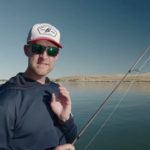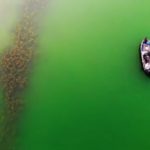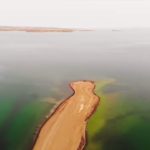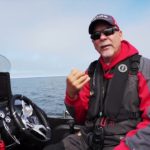Early Muskies – Where to Catch ‘Em
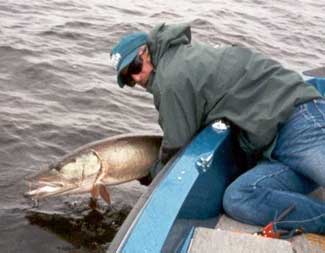
Early season muskies-opening day muskies… Everyone knows where they are, right? Sure we do. Spawning bays. Shallow water. Dead weeds. Grassy marsh water. Bays on the north side of the lake-bays, that warm early because they face south into the sun all day long.
Everyone knows where the muskies are supposed to be. And most of the fish may well be in or near these bays. If you stay in these bays, you’ll see a lot of fish. But if the fish are there to spawn, they will not be in a mood for much else.
Let’s look at three examples –
Opening day on a Wisconsin flowage: Muskies are shallow. Big fish are in less than 3 feet of water. Big, ugly, scarred-up muskies. They look like they have been in a war. They look like dying Chinook salmon making their one big spawning run in their fourth or fifth season. They are completely beat up. These are post spawn muskies. They are beat up from spawning and not in a mood to chase or hit lures. So we move out to the channel edge and look for fish that are not currently in the spawn cycle. Guess what. We catch a few nice fish.
Opening day on a Minnesota/Ontario border lake: Muskies are shallow. Big fish are in less than 3 feet of water. Sound familiar? But these fish are not beat up. No scars. No marks. Spotless. These are pre-spawn, soon to be spawning fish. They are not interested in our lures, either. They have other priorities. So after a fruitless day of observing amorous muskies, we go back to the dock only to hear of two big muskies caught by guys who had the sense(?) to fish mid-lake reefs on opening day.
Opening day on a Twin Cities muskie lake: Muskies are not shallow. Muskies are nowhere in sight. Maybe they spawned weeks ago, have recovered, and – because there are no good weeds yet – have moved out to open water to feed on suspended baitfish. I had read about a study in In-Fisherman in 1982 that suggested this possibility, so we give it a try. We troll crankbaits over open water. We quickly catch two muskies over 40 inches.
The point of these examples is that what everyone “knows,” isn’t always the route to success. So what should we do this year?
Sure, if your area had an early spring, and the muskies have had plenty of time to recover from the spawn, they may be interested in your lures. But if the shallow bay muskies appear disinterested, you may find less-distracted muskies out on the edges, or even suspended in open water.
 Go into those shallow bays if they’re not already getting pounded. The weeds may be well developed. They may even be thick and lush enough to hold baitfish and muskies. If you’re facing a cold front, or if the water is very clear, you may want to go with smaller baits. You may even want to fish slowly. But if the water is warm and dark, don’t hesitate to go big or fast. Burn a bucktail. Work a 10-inch Believer, Suick, or Jake over and through the weedtops.
Go into those shallow bays if they’re not already getting pounded. The weeds may be well developed. They may even be thick and lush enough to hold baitfish and muskies. If you’re facing a cold front, or if the water is very clear, you may want to go with smaller baits. You may even want to fish slowly. But if the water is warm and dark, don’t hesitate to go big or fast. Burn a bucktail. Work a 10-inch Believer, Suick, or Jake over and through the weedtops.
Also be sure to fish any stand-out secondary elements in the bay. A rock pile in the weeds? A wooden pier with heavy pilings? Flooded timber? A single boulder? Any hard structural element in a weedy bay is an absolute must.
But if the fish aren’t there, move out to the deep weedline. Fish parallel to the weedline. Throw large crankbaits. Try slow-rolling spinnerbaits. Pump and rip a muskie jig through the weeds. Nothing in the weeds or on the edges? Move out to the closest structure.
The closest structure is often a rocky point at the entrance to the bay. The more complex and convoluted the point, the better. If there are some weeds mixed in with the rocks, even better. Thoroughly fish these points. Burn a bucktail over the top to pick up the most aggressive fish. Roll a spinnerbait through the weeds. Bounce a crankbait off the rocks. Drop a jig into the inside turns and pockets.
After fishing the points at the entrance to the bays, move out to rock reefs, and humps. If you have weeds mixed in with the rocks, all the better. Poke and probe with a variety of lure types.
After fishing the reefs and humps close to the spawning bays, consider moving to open water. Muskies do suspend in open water, especially when there is open-water forage present. Radio-tracking studies have shown that, in some lakes, big muskies often suspend in open water in the early season. I have caught several June muskies trolling over very deep water. The key word is “over.” Very large muskies can be found suspended 12 to 20 feet down in water that is over 60 feet deep. All they need is a big suspended school of baitfish, and they will be there.
Catch a nice one and let it go. Let them all go.


